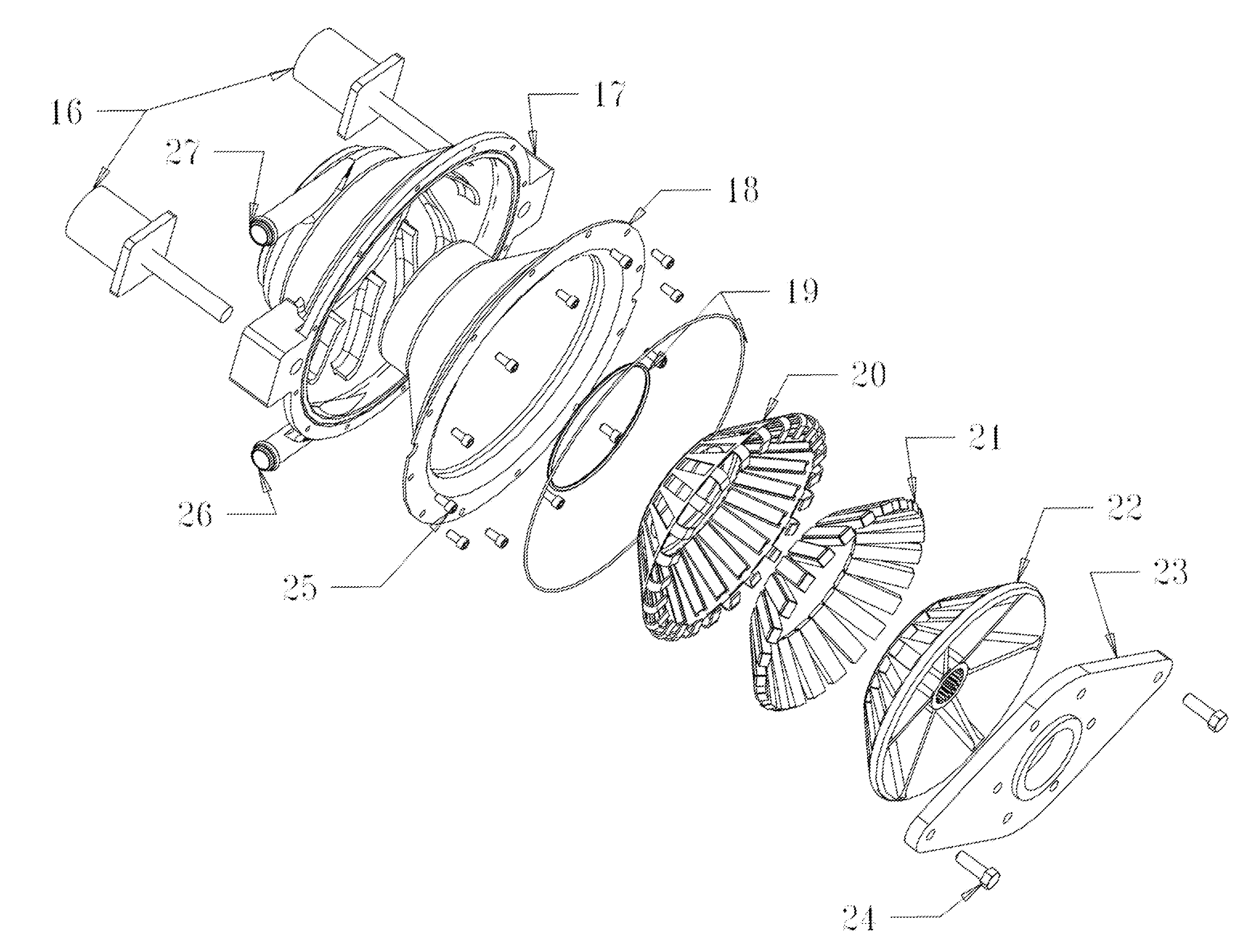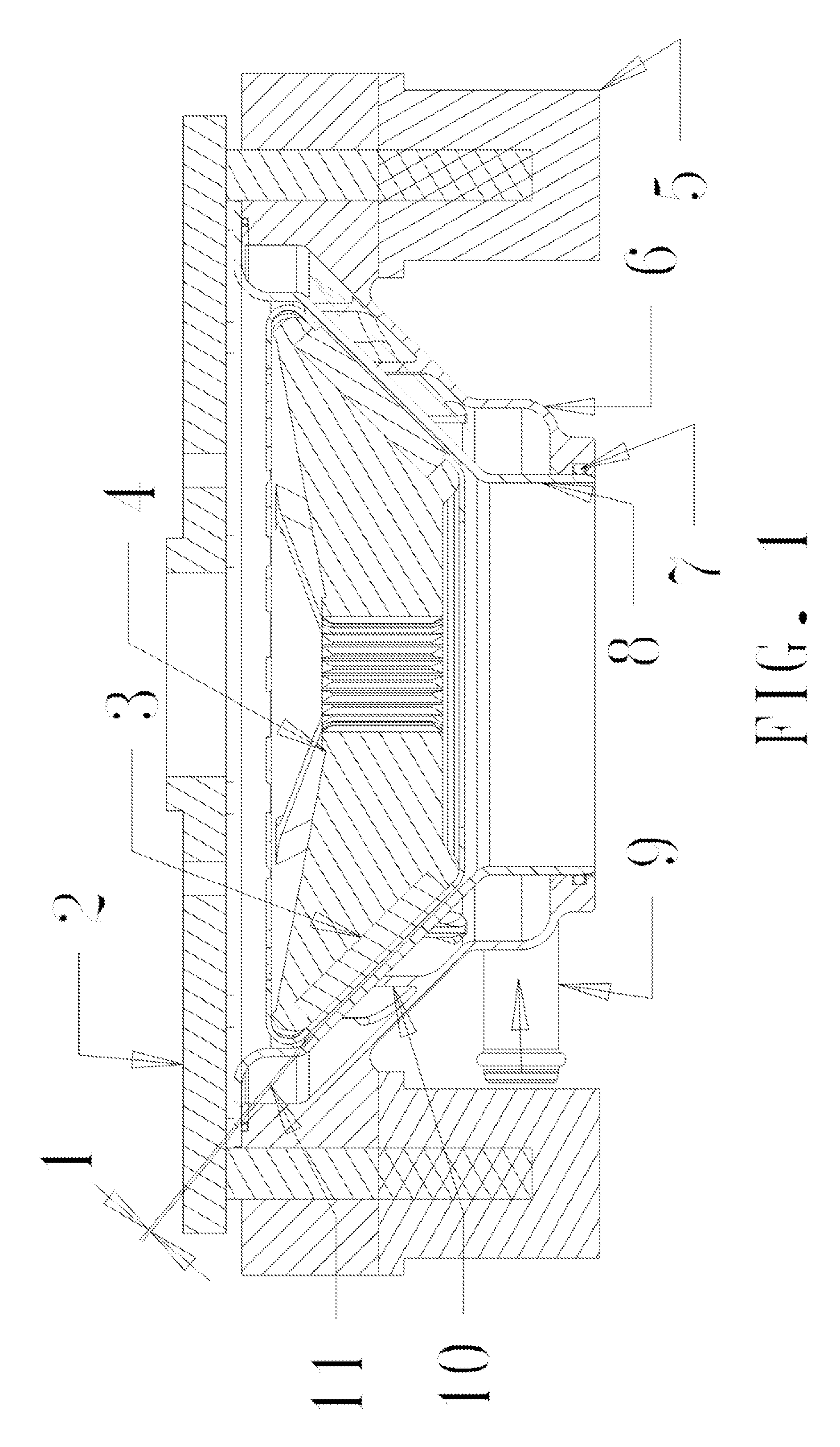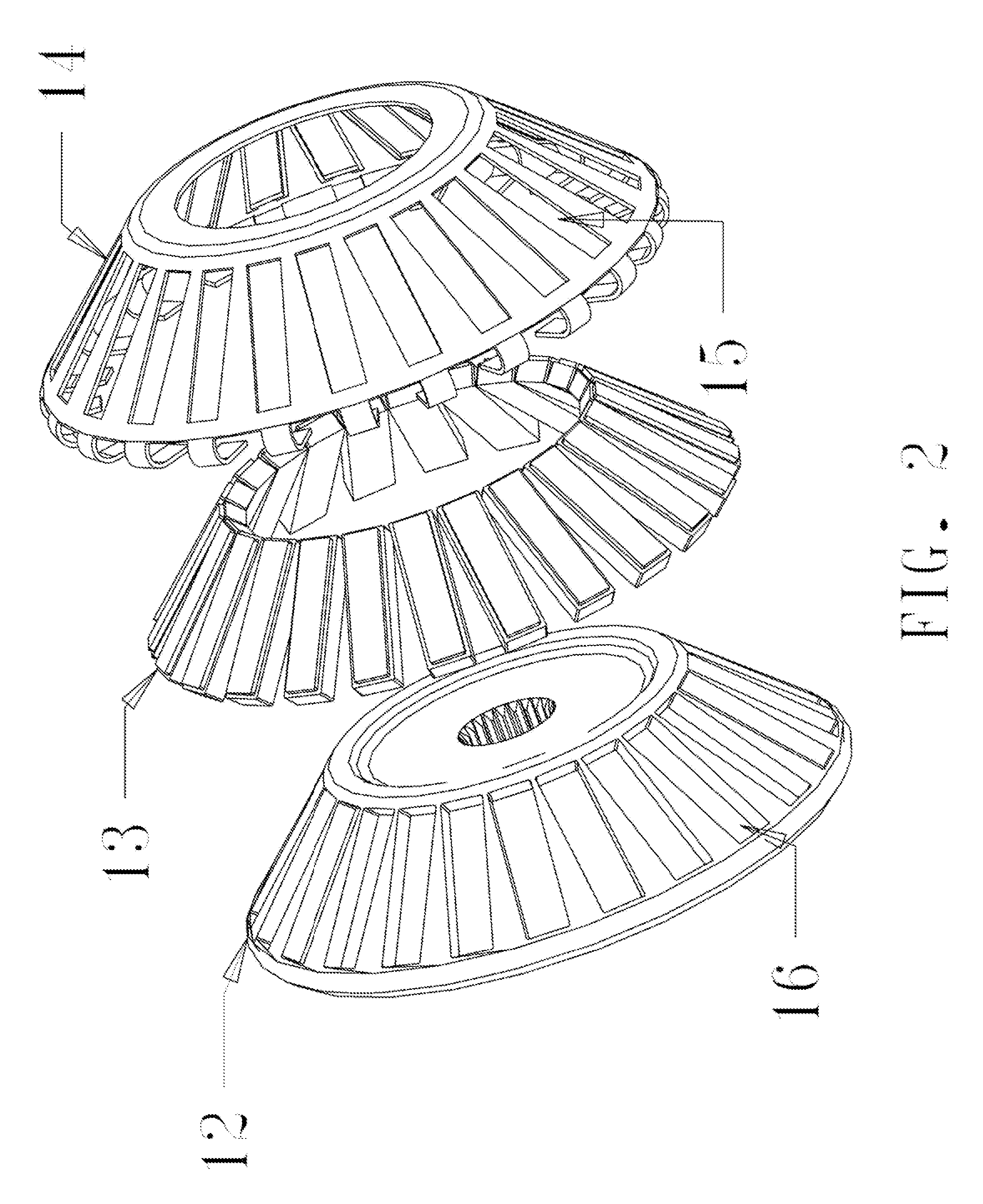Sealess, liquid cooled eddy current energy absorption system
a liquid cooled eddy current and energy absorption technology, applied in the direction of braking systems, asynchronous induction clutches/brakes, mechanical equipment, etc., can solve the problems of high temperature, seal failure, and add a level of device complexity, so as to eliminate braking friction, zero maintenance devices, and low temperature operation
- Summary
- Abstract
- Description
- Claims
- Application Information
AI Technical Summary
Benefits of technology
Problems solved by technology
Method used
Image
Examples
Embodiment Construction
[0022]Braking is controlled by positioning the stationary cooling member(s) closer to or further from the rotating magnets. Coolant flow can be created by convection, or by use of ferromagnetic fluids and their interaction with the rotating magnets, and / or by use of a magnetic pump drive arrangement. The coolant flow path is matched to the magnet placement, in a spiral path, or a straight path if the design is to be implied. Hose connections are made to the stationary member, no rotating seals are needed. Braking energy is a function of RPM, mean effective radius, magnet strength, and distance between the rotor and the stationary cooling member.
[0023]FIG. 1 shows a crossectional drawing of an exemplary, fully assembled liquid cooled eddy current energy absorbing device. 1 refers to the operating gap when the device is fully engaged. The smaller the gap 1 the greater the braking torque. Gap 1 is increased to vary the braking or to turn it off completely. The Torque Reaction Adapter ...
PUM
 Login to View More
Login to View More Abstract
Description
Claims
Application Information
 Login to View More
Login to View More - R&D
- Intellectual Property
- Life Sciences
- Materials
- Tech Scout
- Unparalleled Data Quality
- Higher Quality Content
- 60% Fewer Hallucinations
Browse by: Latest US Patents, China's latest patents, Technical Efficacy Thesaurus, Application Domain, Technology Topic, Popular Technical Reports.
© 2025 PatSnap. All rights reserved.Legal|Privacy policy|Modern Slavery Act Transparency Statement|Sitemap|About US| Contact US: help@patsnap.com



